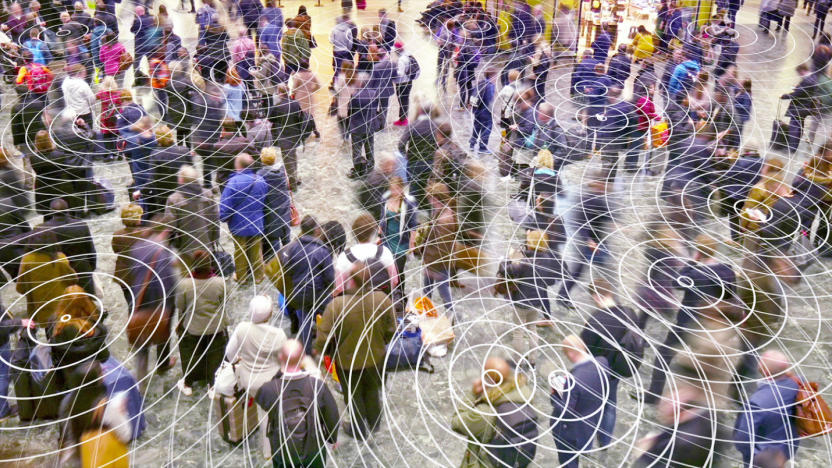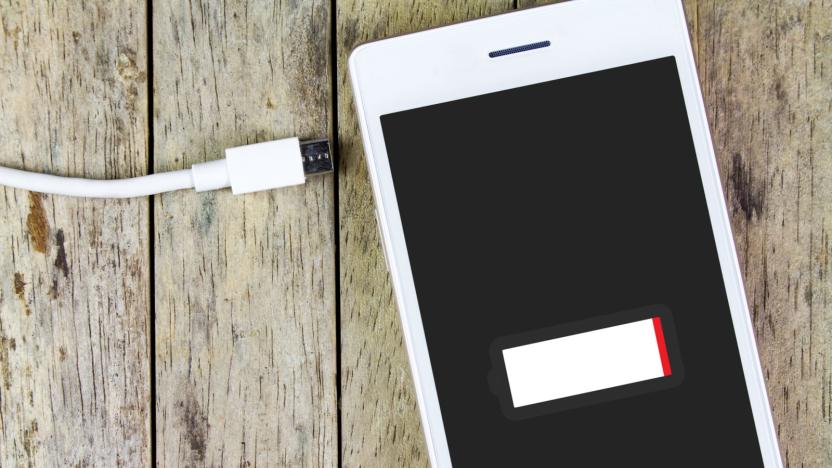RadioWaves
Latest

Researchers power tiny medical implant from over 100 feet away
Researchers at MIT are working on tiny implantable devices that can communicate and be powered wirelessly. In the future, they could be used to deliver drugs, treat disease or monitor conditions from inside a human body. Because the devices don't require a battery, they can be pretty small and the prototype the research team has been working with is about the size of a grain of rice. But the researchers think they can get the devices to be even smaller than that.

Researchers may have detected signals from the universe’s first stars
The early development of our universe is still quite a mystery, but in a new study published today in Nature, researchers describe what may be evidence of when the first stars began to form. After the Big Bang, which took place some 13.7 billion years ago, the universe was dark, hot and full of high-energy particles. Photons couldn't survive, but after around 380,000 years, the universe cooled enough to allow light to actually stick around. That's when the cosmic microwave background (CMB) came to be. It's our universe's first surviving radiation and researchers have looked to it in order to learn more about the earliest years of our universe.

Astronomers just measured a whole lot more than gravitational waves
A couple of weeks ago, the LIGO (Laser Interferometer Gravitational-Wave Observatory) and Virgo teams announced the detection of another set of gravitational waves -- the fourth since LIGO's first detection in September of 2015. The observations of these ripples in spacetime are extraordinary in and of themselves, no matter how many times we record them. However, while the first three sets of gravitational waves recorded were by the two LIGO observatories, the fourth was also detected by a newly established third -- Virgo -- located in Italy. And having three detectors allows researchers to triangulate the source of those waves with extraordinary precision.

Your future devices might not need wireless radios
Seemingly every connected device has at least one wireless radio in it. However, that often requires some big compromises. Those radios often chew up a lot of power, which isn't always practical with Internet of Things gadgets that may not have much room for a battery. Disney Research may have a solution to that problem: ditch the radios entirely. Its scientists have developed technology that uses ambient radio waves to communicate. The approach uses very low-power sensor nodes to reflect radio waves from virtually any background source, whether it's a distant tower or the phone in your pocket. RFID tags already use a similar approach, but the use of many more sources and multiple channels gives you a much longer range -- in tests, the researchers achieved data links at distances up to 164 feet.

Wireless charging tech harvests your phone's wasted radio waves
When you think of wireless charging, you probably think of special charging pads for your phone. But what if your phone could partly charge itself? Radient Micro-Tech claims to have managed just that. It just received two patents for technology that reportedly captures energy from a device's wasted radio waves (those that would merely dissipate in the air) for the sake of charging. While it's not specific about how the technology works, it would harvest those RF waves through antennas built into your phone's screen. Radient is claiming that you'd get up to 30 percent longer battery life, which could be enough to get you through a particularly active day.

Time Machines - Wireless wonder
Welcome to Time Machines, where we offer up a selection of mechanical oddities, milestone gadgets, and unique inventions to test out your tech-history skills. This device famously exhibited the potential of tuned radio waves and their ability to wirelessly convey a signal. In 1899, it transmitted a message successfully from Britain, across the English Channel's 32-mile expanse, to a receiver in France. Its business-minded inventor went on to pioneer an industry in communication that changed the world. Tune in past the break for more about this breakthrough gadget.

University of Washington harnesses RF and TV waves for battery-free wireless devices (video)
The problem with power is that, eventually, it runs out. To help cope with this inevitability, scientists at the University of Washington have developed prototype "ambient backscatter" devices that can passively harness the juice in radio and TV waves. Because they don't generate their own signal, these devices can get by on the juice they siphon from the air -- communicating by absorbing or reflecting binary information from existing signals, instead. According to the researchers, these signals can travel as far as 6.5 miles from a TV tower at speeds of 1KB per second. Although the project is still in its infancy, its creators are already thinking up practical applications. Ambient backscatter tags could be built into buildings or bridges, for instance, and alert monitoring stations to potential structural damage or defects. The team also imagined tagged keys and furniture, warning a user if they accidentally dropped something between the couch cushions -- all without an energy source. This type of tech could bring us closer to the internet-of-things future we've been promised, allowing smart communications to exist virtually anywhere. The Huskies said this could even enable a dead smartphone to send TV signal-powered text messages -- which could be great considering how often we forget to charge our handsets.

Stanford researchers make heart implant powered by radio waves, put batteries out of a job
Batteries used to be the only way to power implantable gadgets, but additional surgeries are needed to replace the power packs once their juice runs out -- a less-than-ideal solution for patients. Recent discoveries, however, have such medgadgets being powered by photons, hip hop and now high-frequency radio waves. Electrical engineers at Stanford built a cardiac device that uses a combination of inductive and radiative transmission of power, at about 1.7 billion cycles per second, to its coiled receiving antenna. Previous prevailing opinion held that the high frequencies needed for wireless power delivery couldn't penetrate the human body deep enough, and the lower frequencies that would do the trick require antennas too large to work as implants. That conundrum was solved by getting the high-frequency signals to penetrate deeper using alternating waves of electric and magnetic fields. That allowed a 10x increase in power delivery -- up to 50 microwatts to a millimeter radius antenna coil -- to an implant five centimeters below the skin. That antenna also was also designed to pull power regardless of its orientation, making it ideal for applications inside always-moving human bodies. Of course, the implant's really just a proof-of-concept at this stage, but hopefully it won't be long before battery powered implants go the way of the dodo TouchPad.

Researchers use ambient WiFi radio waves to see through walls
Seeing through walls hasn't been a super hero-exclusive activity for a while now. According to Popular Science, however, University College London researchers Karl Woodbridge and Kevin Chetty have created the first device that can detect movement through walls using existing WiFi signals. While similar tech has required a bevy of wireless nodes, the duo has pulled off the feat with a contraption roughly the size of a suit case. Much like radar, the device relies on the Doppler effect -- radio waves changing frequencies as they reflect off of moving objects -- to identify motion. Using a radio receiver with two antennas and a signal-processing unit, the system monitors the baseline WiFi frequency in an area for changes that would indicate movement. In tests, the gadget was able to determine a person's location, speed and direction through a foot-thick brick wall. The technology's potential applications range from domestic uses to scanning buildings during combat. Best of all, since the university's hardware doesn't emit any radio waves, it can't be detected. How's that for stealthy?

Battery-less transmitters pave the way for wireless baby sensors
The radio waves that saturate the air around us may, or may not, give us headaches and cancer, but we can tell you for certain they're capable of powering tiny wireless chips. Renesas Electronics Corp has created a new ultra-low power wireless transmitter that can push data to both Bluetooth and WiFi receivers without the need for a battery or AC adapter. Instead of the typical tens of milliwatts, the little transmitters require only a few microwatts of power, which can be harvested from environmental radio waves through LC resonance. The creators envision adhesive sensors that send a baby's body temperature to laptops and ads that beam coupons to smartphones over short distances -- you know, the sort of stuff NFC can do, but without the specialized hardware.

Astronomers snap black hole murder in graphic detail (video)
We tend to imagine a black hole sucking everything around it straight into oblivion. The truth, however, is even more gruesome. Astronomers have just captured an ultra hi-res image of our neighbouring galaxy, Centaurus A, and it helps to reveal what actually happens. Matter is yanked helplessly towards a black hole at the galaxy's core, but it refuses to die quietly. For some unknown reason, it erupts as it falls, spewing out vast plumes of particles -- like blood from celestial murder. These death throes emit radio waves, allowing us to witness them using radio telescopes even though we are 12 million light-years away. If only we were closer; if only we could intervene. Alas, all we can do is watch the video after the break and hit the source links for a fuller explanation -- though, admittedly, none of those sound like awful options.







